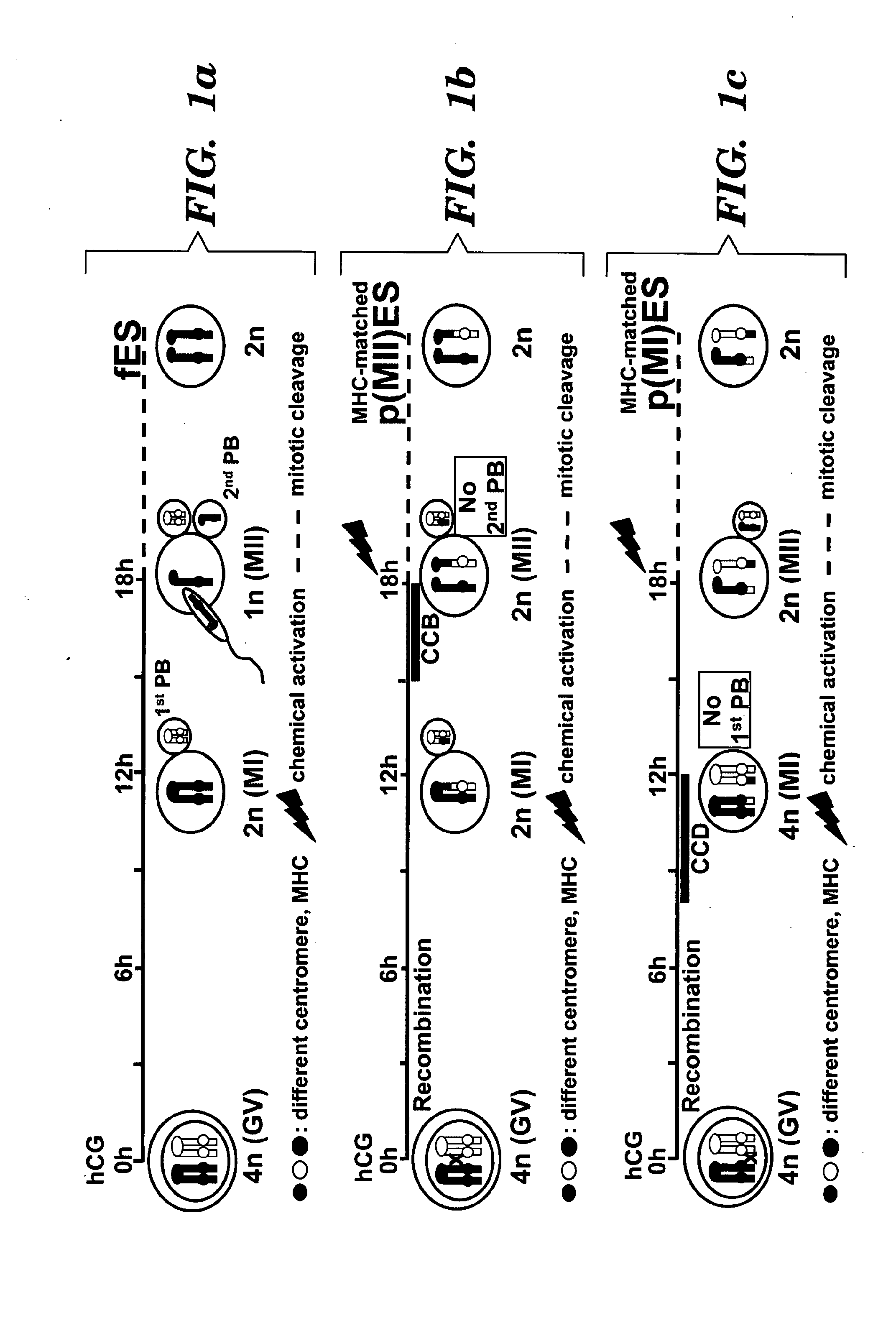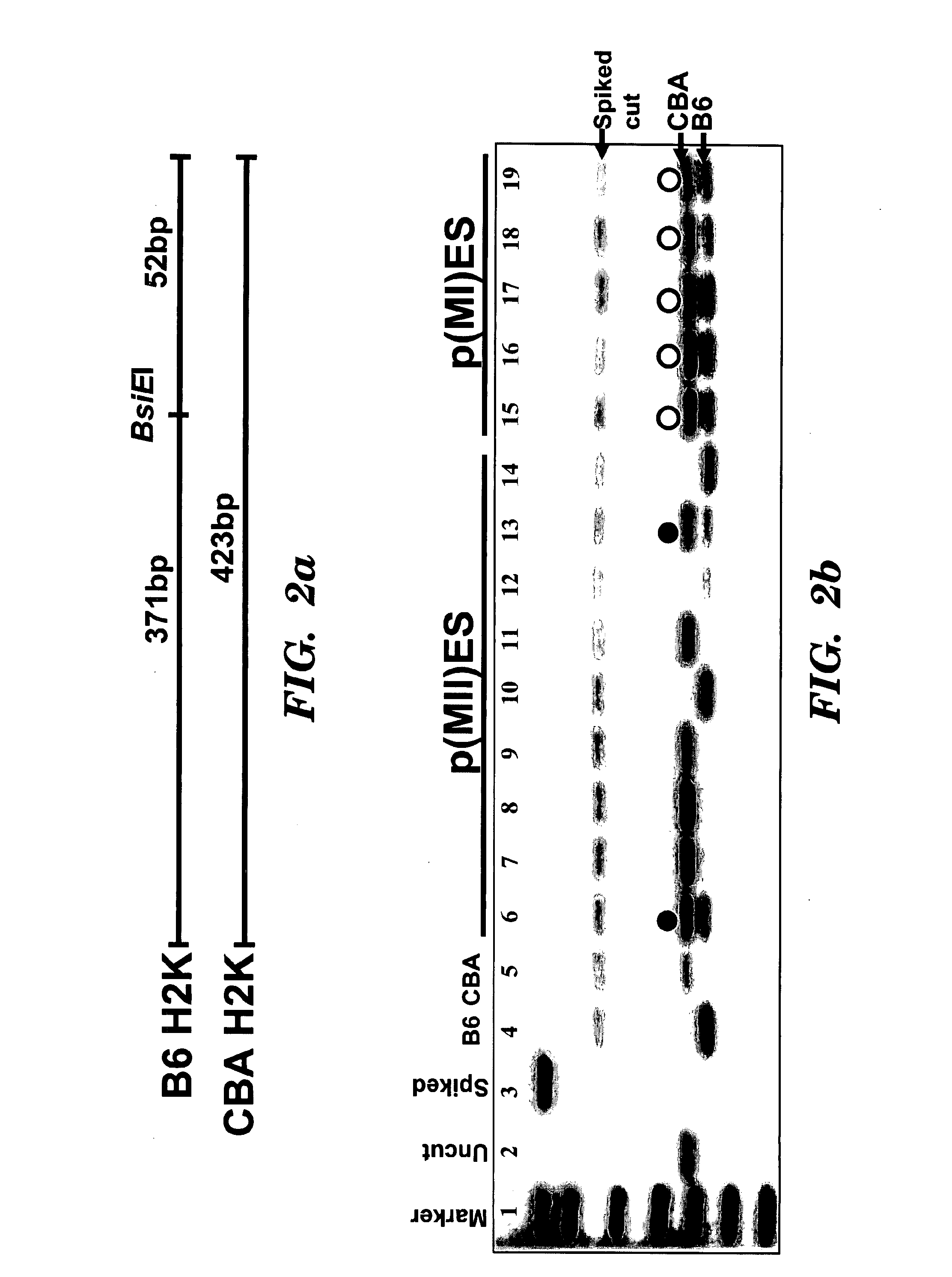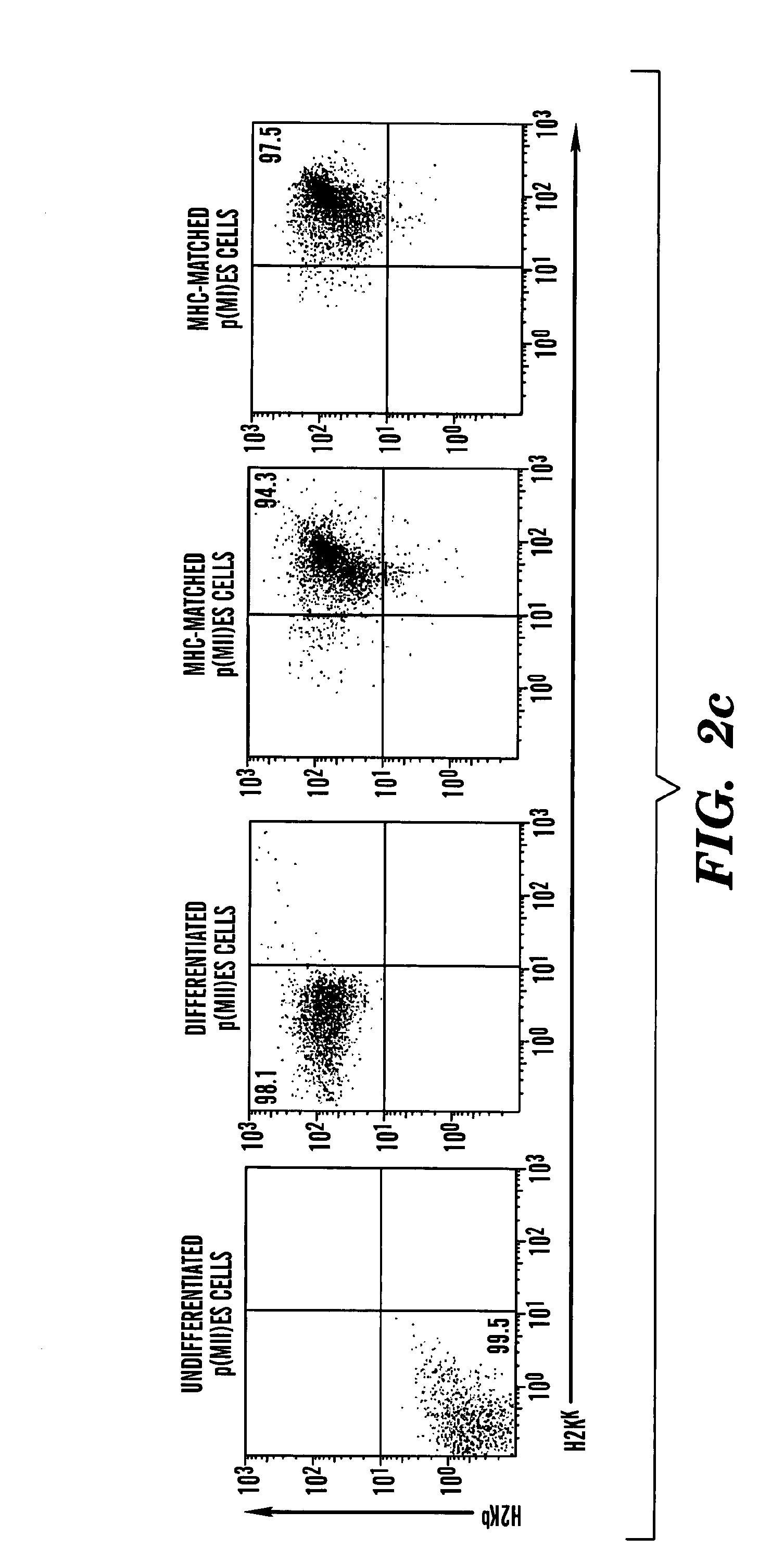Methods for producing embryonic stem cells from parthenogenetic embryos
a technology of embryonic stem cells and embryos, applied in embryonic cells, biochemistry apparatus and processes, library screening, etc., can solve the problems of monozygotic twin transplantation, cell creation by somatic cell nuclear transfer, and limit the transplantation of autologous tissues
- Summary
- Abstract
- Description
- Claims
- Application Information
AI Technical Summary
Benefits of technology
Problems solved by technology
Method used
Image
Examples
example 1
Heterozygous Parthogenic Embryonic Stem Cells
Methods
[0183]SNP Detection by Restriction Enzyme Digestion of PCR Amplicons.
[0184]The variants of the H2K gene (MHC class I antigens) were amplified by PCR. Exon-spanning oligonucleotides were designed in order to flank restriction site variants for BsiE1 (specific for H-2 Kb). The sense oligonucleotide (CCTGGGCTTCTACCCTGCT) (SEQ ID NO: 66) is located in exon 4, the anti-sense primer (CCACCACAGCTCCAGTGAC) (SEQ ID NO: 67) in exon 5 of the H-2K gene. PCR was carried out with 50 ng genomic DNA. PCR reactions were set up in a total volume of 50 ml reaction mix containing 2 units of AmpliTaq DNA polymerase (Applied Biosystems [Perkin Elmer], Weiterstadt, Germany). PCR cycling was performed using the following protocol: 94° C. for 4 min (initial denaturation); 92 C for 40° sec, annealing 60° C. for 40 sec, 72° C. for 40 sec (35 cycles); 72° C. for 10 min (final elongation). PCR products were purified using Qiaquick PCR purification kit (Qiagen,...
example ii
Parthenogenesis Human Embryos p(MII)
[0219]Parthenogenesis:
[0220]Human oocytes that fail to fertilize (or fresh unfertilized oocytes) will be washed in 20 μL drops of HEPES-buffered HTF (human tubal fluid)+5% HSA (human serum albumin) and subsequently placed in a four-well culture plate of Ham F10 media with puromycin 10 μgm / ml. The oocytes will then be checked at 6 and 12 hours for the presence of a second polar body or pronucleus. If either is noted, the activated oocytes will be washed again and cultured in G1.3 / G2.2 media (Vitrolife).
[0221]Alternatively the failed to fertilize oocytes after washing with HEPES-buffered HTF+5% HSA will be exposed for 5-10 minutes to 5 μM calcium ionophore in HEPES-buffered HTF+5% HSA followed by 3-6 hours incubation in 1 mM 6-DMAP (6 dimethylaminopurine). Subsequently the oocytes will be cultured in G1.3 / G2.3 media. Culture is performed at 37 C in 5% CO2, 5% O2, 90% N2 (Santos T A, Dias C, Henriques P, et al. Cytogenetic analysis of spontaneously a...
example iii
Transplantation of Hematopoietic Stem Cells Derived from p(II)ES and p(I)ES Cells
[0222]p(II)ES and p(I)ES cells expressing green fluorescent protein (GFP) were differentiated in vitro using HoxB4 protein mediated OP9 stroma cell coculture method and transplanted into immune deficient mice as indicated in Kyba et al., Cell, 2002, April 5:109(1):29-37 HoxB4 confers definitive lymphoid-myeloid engraftment potential on embryonic stem cell and yolk sac hematopoietic progenitors. Peripherial blood was isolated and analyzed using FACS analysis (FIG. 12a-12c). FACS analysis shows that hematopoietic stem cells derived from both p(II)ES (FIG. 12c) and p(I)ES cells (FIG. 12b), after transplantation, successfully reconstituted peripheral blood.
[0223]All references cited herein and throughout the Application are herein incorporated by reference.
REFERENCES
[0224]1. N. D. Allen, S. C. Barton, K. Hilton, M. L. Norris, M. A. Surani, Development 120, 1473 (June, 1994).[0225]2. J. B. Cibelli et al., Sc...
PUM
| Property | Measurement | Unit |
|---|---|---|
| Volume | aaaaa | aaaaa |
| Fraction | aaaaa | aaaaa |
| Fraction | aaaaa | aaaaa |
Abstract
Description
Claims
Application Information
 Login to View More
Login to View More - R&D
- Intellectual Property
- Life Sciences
- Materials
- Tech Scout
- Unparalleled Data Quality
- Higher Quality Content
- 60% Fewer Hallucinations
Browse by: Latest US Patents, China's latest patents, Technical Efficacy Thesaurus, Application Domain, Technology Topic, Popular Technical Reports.
© 2025 PatSnap. All rights reserved.Legal|Privacy policy|Modern Slavery Act Transparency Statement|Sitemap|About US| Contact US: help@patsnap.com



